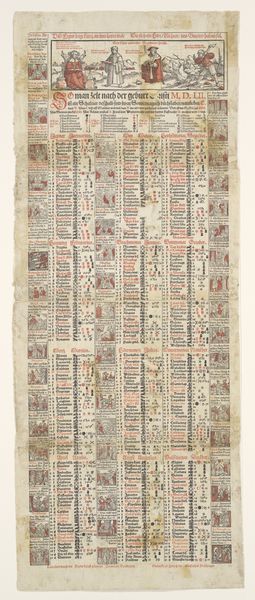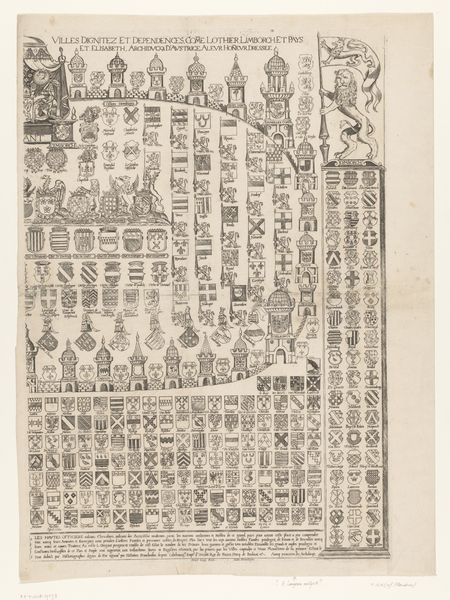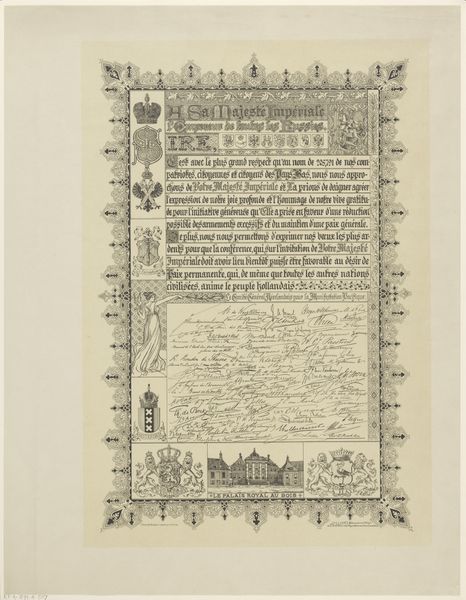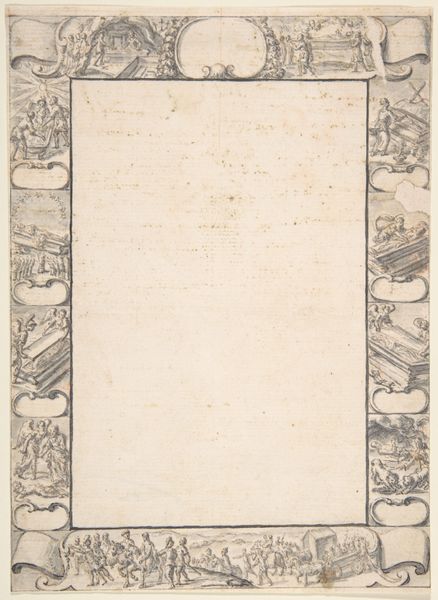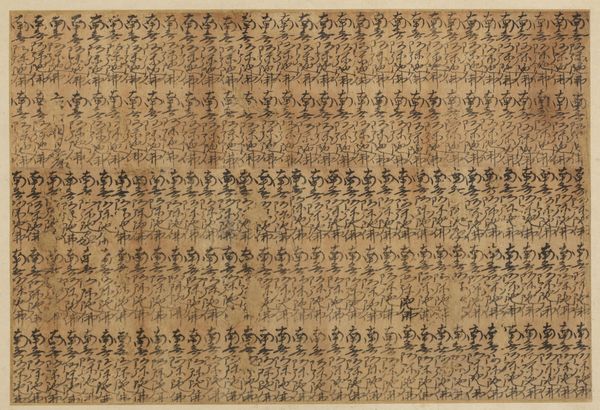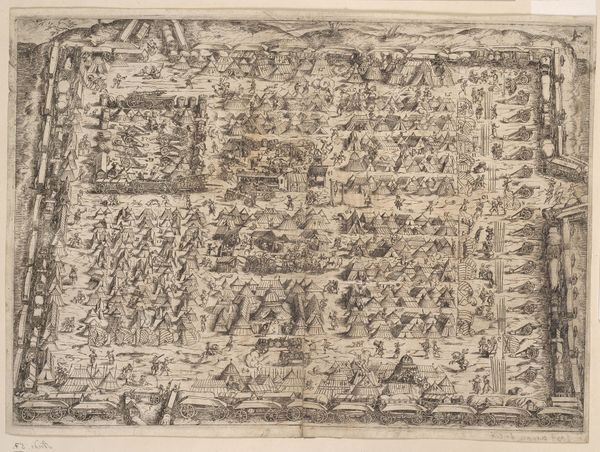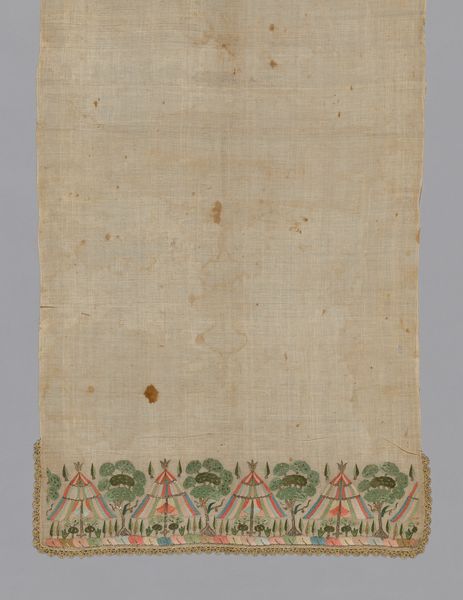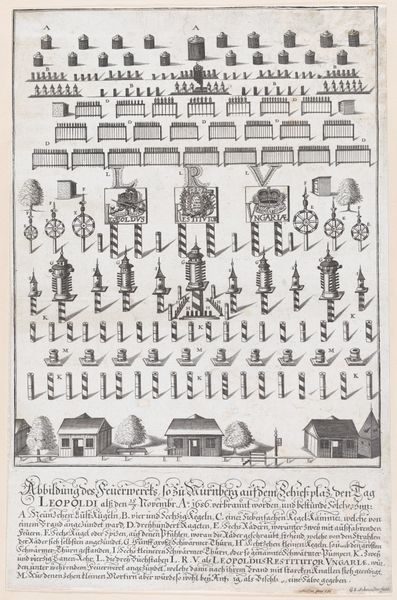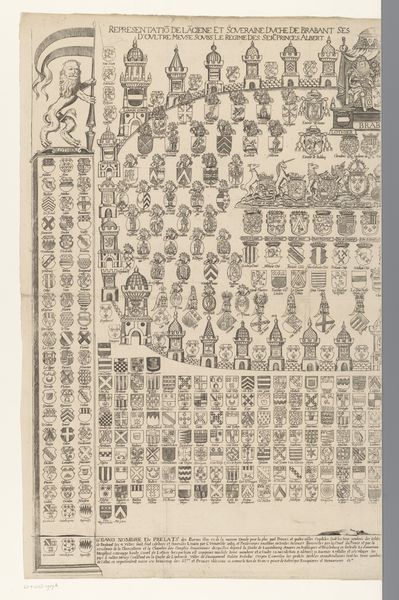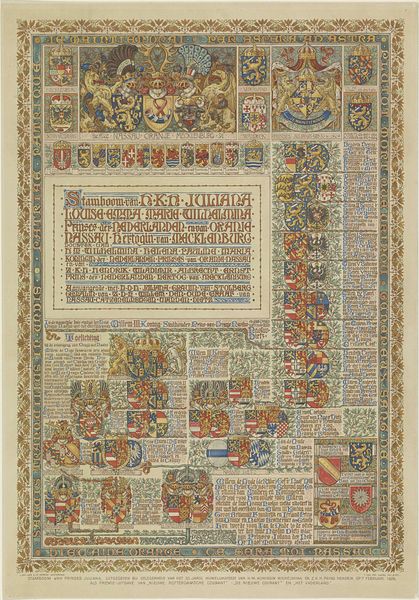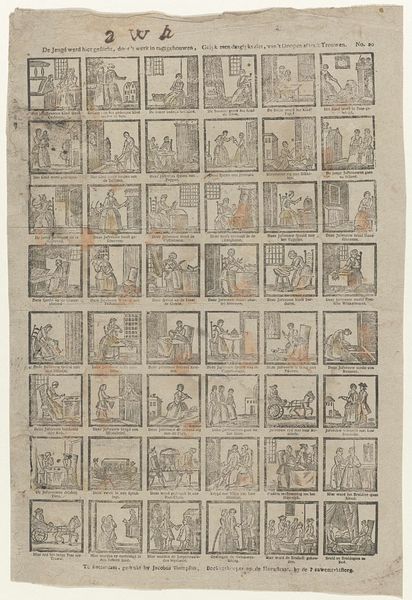
Dimensions: height 270 mm, width 220 mm
Copyright: Rijks Museum: Open Domain
Editor: So, here we have Jost de Negker's "Kalender," created in 1535. It's a woodcut print. It looks a bit like an infographic, almost. What jumps out at you when you see this piece? Curator: Immediately, the material itself. This isn't just an image; it's a product of labor, a woodcut intended for mass consumption. Each mark, each line, speaks to a specific process of carving and printing. How was the wood sourced, prepared? What kind of press was used? Consider this object's place in a society where printing was revolutionary technology. It wasn't precious, but functional. Editor: Functional how? Like, as an actual calendar? Curator: Precisely! Calendars, before mass printing, were exclusive objects. Now, they become somewhat democratized, accessible through relatively inexpensive prints. And note the iconography – symbols for weather, astrology – merging practicality with popular beliefs. This intersection tells us about the daily life and concerns of the people consuming these images. It brings up interesting questions, for example: who made these images and what can the image itself say about craft guilds at the time. Editor: So, it's less about the artistry and more about the making and its role in society? Curator: Not exclusively, but certainly with an emphasis on those elements. We look at art not as isolated aesthetic objects but as products of social, economic, and material conditions. It gives us an entryway to looking at this artist's entire milieu. Editor: That's a really interesting perspective, looking beyond just what the image depicts. I'll never look at prints the same way! Curator: Hopefully you won't look at *any* artwork the same way again!
Comments
No comments
Be the first to comment and join the conversation on the ultimate creative platform.
